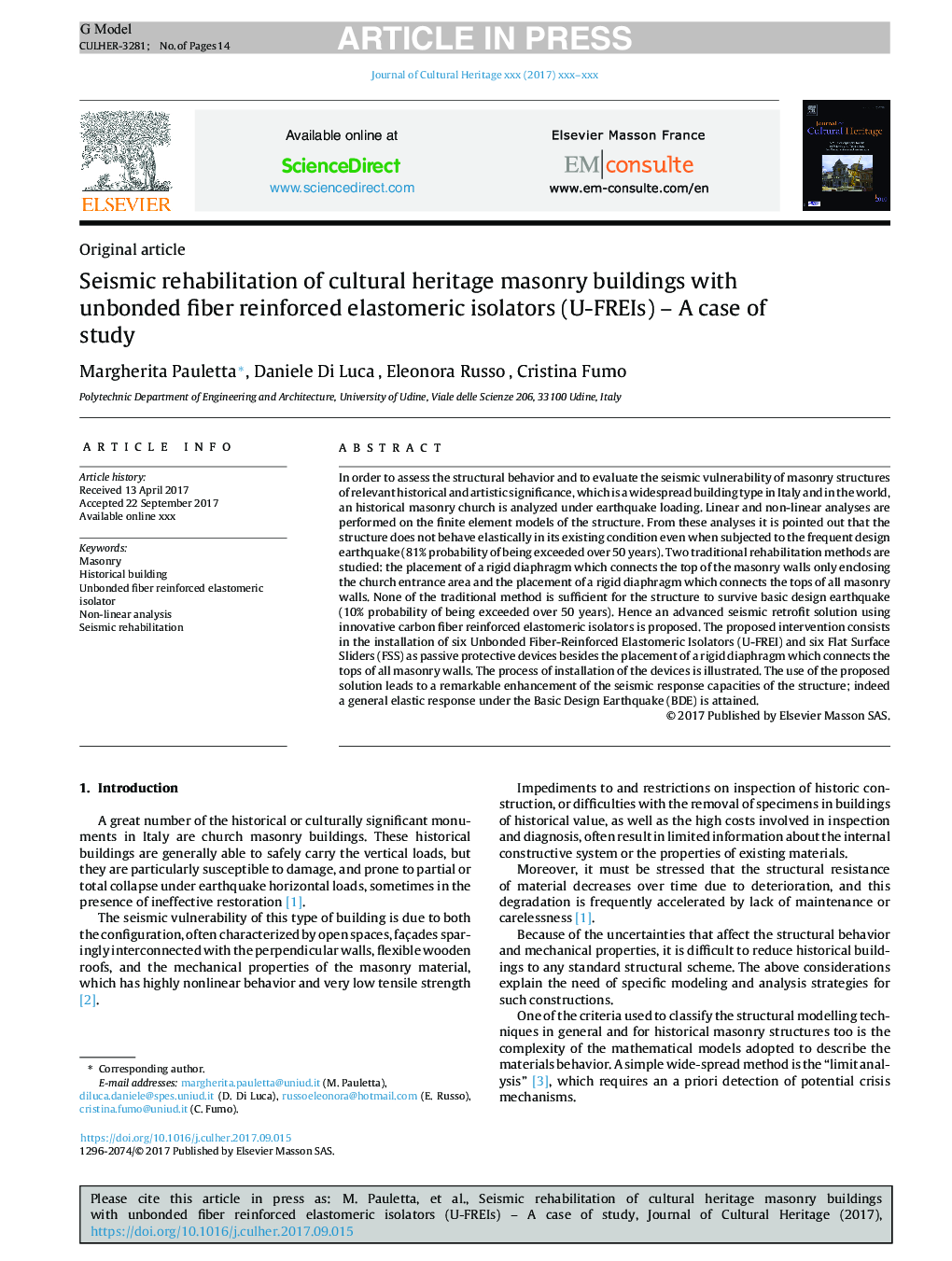| Article ID | Journal | Published Year | Pages | File Type |
|---|---|---|---|---|
| 7445972 | Journal of Cultural Heritage | 2018 | 14 Pages |
Abstract
In order to assess the structural behavior and to evaluate the seismic vulnerability of masonry structures of relevant historical and artistic significance, which is a widespread building type in Italy and in the world, an historical masonry church is analyzed under earthquake loading. Linear and non-linear analyses are performed on the finite element models of the structure. From these analyses it is pointed out that the structure does not behave elastically in its existing condition even when subjected to the frequent design earthquake (81% probability of being exceeded over 50 years). Two traditional rehabilitation methods are studied: the placement of a rigid diaphragm which connects the top of the masonry walls only enclosing the church entrance area and the placement of a rigid diaphragm which connects the tops of all masonry walls. None of the traditional method is sufficient for the structure to survive basic design earthquake (10% probability of being exceeded over 50 years). Hence an advanced seismic retrofit solution using innovative carbon fiber reinforced elastomeric isolators is proposed. The proposed intervention consists in the installation of six Unbonded Fiber-Reinforced Elastomeric Isolators (U-FREI) and six Flat Surface Sliders (FSS) as passive protective devices besides the placement of a rigid diaphragm which connects the tops of all masonry walls. The process of installation of the devices is illustrated. The use of the proposed solution leads to a remarkable enhancement of the seismic response capacities of the structure; indeed a general elastic response under the Basic Design Earthquake (BDE) is attained.
Related Topics
Physical Sciences and Engineering
Chemistry
Physical and Theoretical Chemistry
Authors
Margherita Pauletta, Daniele Di Luca, Eleonora Russo, Cristina Fumo,
